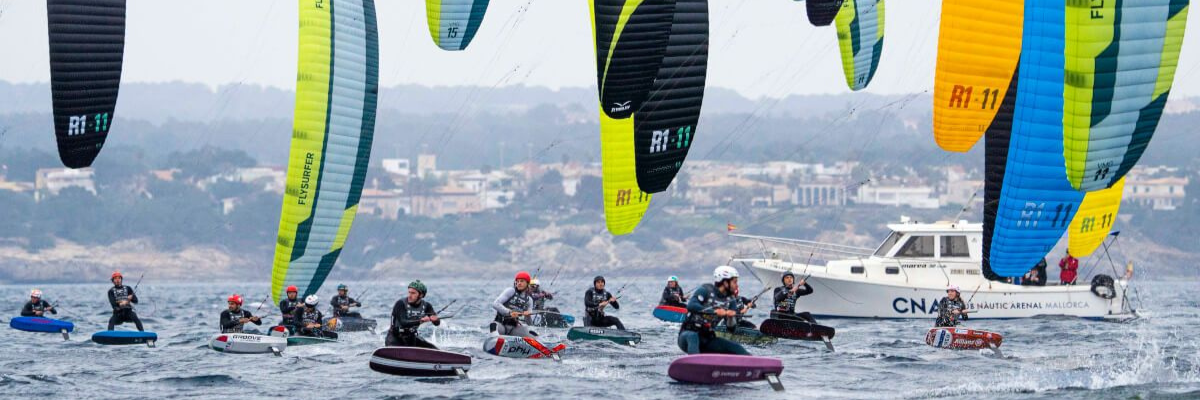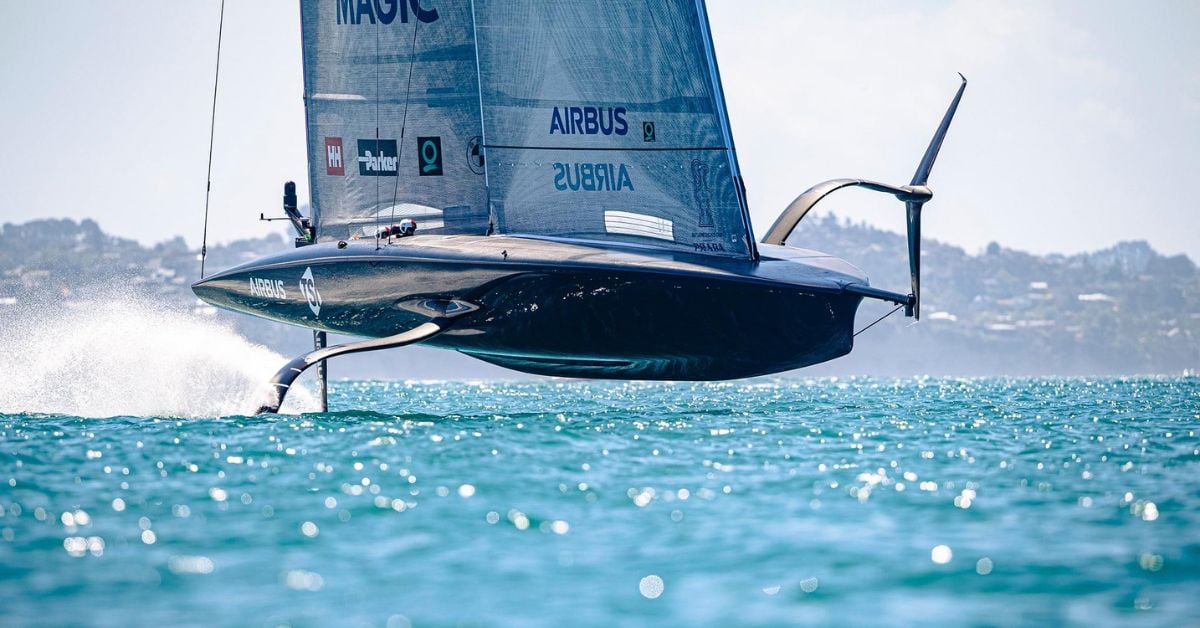Developing standards for the foiling segment
Foiling Cup to be introduced at Metstrade 2026
Foiling has conquered a firm place in the sport, leisure and professional boating world. Guided by the Foiling Organisation, foiling skippers and event organisers urge for the global associations to adapt their policies and include the new segment. Quality standards, safety measures and navigational regulations should take account of the characteristics of sailing on hydrofoils. On the sport side of foiling, the new Foiling Cup is to be announced at Metstrade in November.
 Hans Buitelaar
Hans Buitelaar
Prophecies of the hydrofoil visionaries
Prophecies of the hydrofoil visionaries have come true: flying above water has changed boating. Foiling manifests as the ideal solution to sail at high speeds with lightweight boats.
In the sport of sailing, foiling dominates the big events. For motor boats, foiling allows high speeds at low energy demand which enables electric powered boats to go fast and achieve a respectable range with limited battery capacity and no emissions.
Ferries in urban areas are converting to electric foiling at an accelerating pace to provide fast and clean transport. Fun with personal watercraft and toys like fliteboards and al kinds of small boats has added a spectacular note to playing in and above the water.
High seas foiling
Even the last frontier of sail racing: foiling on the high seas, is being crossed. But not without difficulties.
The global sail racing event of the Ocean Race Europe started early August in Kiel, Germany with a fleet of seven Imoca 60 foot racing yachts. The professional teams were able to reach speeds in the range of 20 knots in breezes that merely exceeded 15 knots.
The Imoca class of sailing yachts is designed for short handed racing over the high seas. The latest models in the fleet (and all of the participants in the Ocean Race) are equipped with hydrofoils that will provide lift to windward and up, just not to the point that the whole boat is flying above the water.
In strong winds on the middle of the oceans, the racing yachts need to be strong. That is why the Imoca’s do not fly completely above the water (yet) like America’s Cup boats. The America’s Cup is sailed on short courses in coastal waters.
The foils on Imoca’s extend from the hull quite far out from the sides. The sailors also use outrigger poles to be able to trim the foresails flat on a reaching course.
Minutes after the start of the first leg of the race, two teams had a collision. During a sudden gust of wind, teams Allagrande Mapei and Holcim PRB broached. With the temporary stronger wind, both racing boats were overpowered with the surface of sail they were carrying.
Allagrande Mapei on the windward side managed to get back control over the steering and get the boat on the desired course, while Holcim PRB was still struggling to do the same. From leeward, Holcim PRB came too close and ripped the front sail of Allagrande Mapei with the tip of their windward hydrofoil.
When Holcim PRB finally beared off, they hit the outrigger of Allagrande Mapei and this collision pierced a whole in the boat’s hull. Both teams had to retire the race to determine and repair the damage. Two days after the start, while the other boats in the fleet were almost halfway the first leg of the race, both teams still remained in Kiel.
Other dangers of foiling
The incident reveals that hydrofoils, next to high speed and excitement, also add new dangers to sailing. Sharp extensions stick out from boats.
In the crowded hectic manoeuvring that happens just before a regatta start, this poses real danger. Risk increases with higher speeds on any vehicle. When large vessels like these ocean going sail racing yachts, weighing 8000 kgs., reach 20 knot speeds while having long carbon fibre sharp extensions sticking out, ample space is required.
Luckily, none of the sailors in either crew got injured. Dinghies, surfboards or electric powered foilboards playfully flying along beaches where people swim, pose dangers as well.
Agenda for foiling safety and regulation
Safety is addressed as one of the concerns in the growing segment of hydrofoiling at the second World Foiling Congress that was held on May 20th in Genova, Italy.
During panel discussions, focussing on different segments in hydrofoiling, like personal watercraft, professional vessels like ferries and also recreational boats, the need to integrate specific standards for hydrofoiling vessels is expressed.
Manufacturers of surfboards on foils, foiling dinghies, wingfoilers and other playful water craft, could benefit from safety and quality standards.
For the somewhat bigger boats, the Recreational Craft Directive that is part of European regulations, needs to be upgraded to include standard for foiling boats and yachts.
Considering the growing use of (electric) hydrofoil craft in commercial enterprise, like ferries, pilot boats and passenger craft, a panel that explored the future challenges for these kind of vessels recommends to amend the commercial high speed craft regulations from IMO and national authorities to include rules that fit the characteristics of foiling vessels.
This should enable further growth of the emerging foiling segment in the marine industry.
The Foiling Organisation founder Luca Rizotti, organiser of the congress said: “The outcomes of the discussions set a clear agenda for future regulatory alignment, certification standardisation, and cross-sector cooperation, supporting the sustainable growth of the foiling industry at a global scale.”
The way forward in foiling sports
Following the World Foiling Congress, the same organisers held the Foiling Sports Congress along the shores of Lake Garda, also in Italy.
Foiling in sailing can enjoy immense and rapid adaptation by sports associations. Three classes of foiling sailing have become part of the Olympic games: the two-person mixed open catamaran Nacra 17, men and women IQ Foil windsurfers and the Formula Kite kiteboarding class.
Furthermore, there are championships in the Waszp class, Moth, ETF26 and Birdyfish boats, the pump foil boards, e-foil boats and foil equiped SUP boards. Wingfoiling, where the sailor holds a pumped up wing sail in his hands while balancing on a foil board, has become popular around the world.
SailGP, a circuit of matches around the world in cities close to a spectator crowd, is sailed on foiling 50 foot catamarans. The America’s cup is raced on foiling big boats, like the Ocean Race on Imoca’s as mentioned before.
The Sport Congress brings the atheletes and event organisers together to align the international calendar and exchange knowledge about the specific events for foiling sailing.
Professional sailor Giulia Conti is one of the participants to the congress.“The discussions we had are really important to determine how to move forward,” she says. “Foiling is the future of sailing, and it is important to gather everyone, from athletes to stakeholders to organisers. It is important to have a central organisation able brings the foiling world together.”
The Foiling Cup
During the conference, The Foiling Organisation announced a new venue: The Foiling Cup.
This is to be a new cup, including races in different classes of boats and boards, where teams of different ages, sexes and possibly abilities will form to compete. The teams will be representing yacht clubs or be professional sponsored teams.
Details of the Foiing Cup are to be announced during Metstrade 2026 in November at the Foiling Technology Zone.
.jpg?h=400&iar=0&w=1200)

